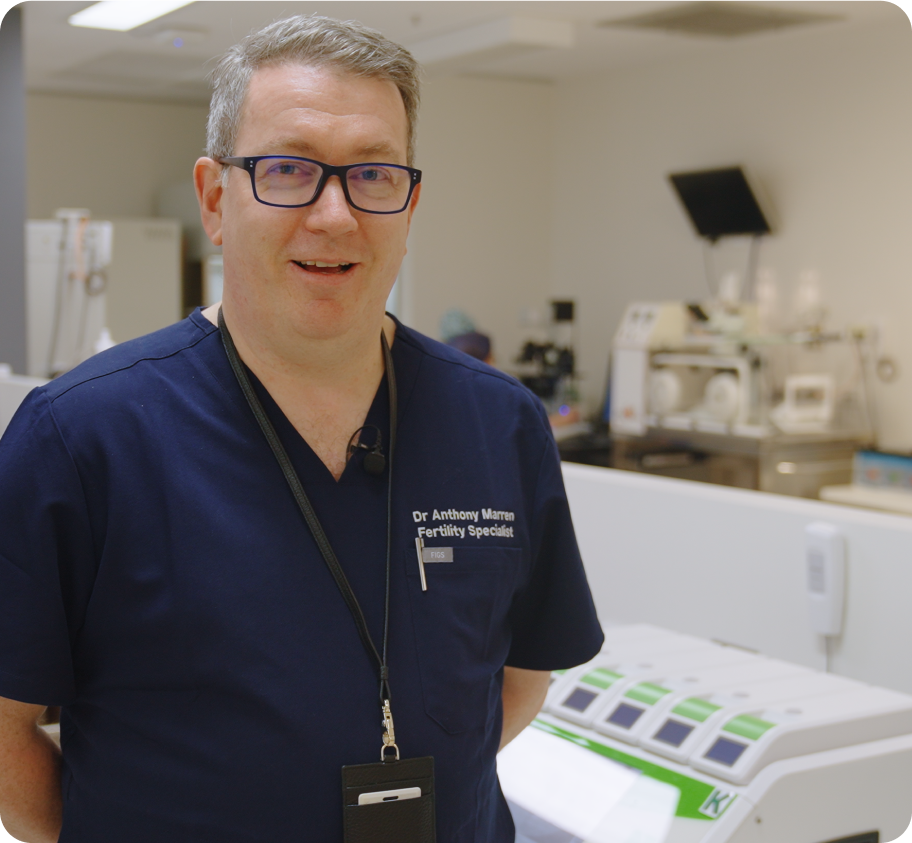
Ovulation cycle tracking is a simple yet highly effective way to identify your most fertile days. By monitoring your hormone cycle, we can predict when ovulation will occur. This process is triggered by a surge of hormones from the pituitary gland, which typically happens about 36-hours prior to ovulation.
At my clinic, we use straightforward blood tests and ultrasounds to detect this hormone surge and pinpoint the best time for conception.

Tracking ovulation is key for anyone trying to get pregnant because it helps you find the days when you’re most fertile. By knowing when you ovulate, you can time intercourse to improve your chances of conception.
It also helps us better understand your reproductive health and any irregularities in your cycle.

This involves measuring your basal body temperature (BBT) every morning before getting out of bed. A slight rise in BBT can indicate that ovulation has occurred.
Apps and ovulation prediction kits can estimate your fertile window based on the length of your menstrual cycle. While convenient, they are less accurate than clinical methods.
Bloods tests measuring the hormones FSH, LH, Estradiol (Estrogen), and Progesterone can be performed throughout the cycle to accurately determine ovulation. Ultrasound may also be used in some people.
As you approach ovulation, your cervical mucus becomes clearer, thinner, and stretchy - ideal for supporting sperm movement. Observing these changes can help you identify your most fertile days.

If your cycle is irregular or absent, we may consider ovulation induction to stimulate egg release. This involves using medications or injections to encourage your ovaries to produce and release eggs.
These treatments can be particularly helpful for individuals with conditions like PCOS (Polycystic Ovary Syndrome) or those experiencing unexplained ovulation issues.

Facing irregular or absent periods can be incredibly disheartening, whether due to a condition like PCOS or for reasons we have yet to uncover. But there’s hope.
There are several options available to support your fertility, and I’m here to help you choose the one that aligns with your values, goals, and unique circumstances.
Starting or growing your family is still possible, and I’m committed to guiding you every step of the way to make that dream a reality.
There are multiple methods of ovulation tracking. The most common ones are: app-based cycle tracking (provision of predictive information based on historical cycle length), basal body temperature (reflects the rise in temperature seen with ovulation), cervical mucus testing (reflects a predictable change in mucus consistency coming up to and then with ovulation), urine hormone testing (depending on the complexity of the test, urine tests, may test LH alone or a set of hormones), and blood hormone testing (typically LH, Estrogen, and Progesterone are tested).
Blood hormone testing is the most accurate method of ovulation tracking.
Correct timing of intercourse is an important component of achieving a pregnancy. By tracking, couples can ensure that this component is being done correctly.
It is suggested that younger women (< 35-years) try for no more than 12-months prior to seeking assistance. Older women (≥ 35-years) should try for no more than 6-months prior to seeking assistance.
Unless there is a concern regarding cycle regularity, I normally do not suggest cycle tracking prior to wanting to conceive.
Female age is certainly associated with fertility rates (see below). Age per se does not impact ovulation until a woman is close to menopause.
Women are born with their total number of eggs. At birth, there are approximately 1-million eggs within the ovaries. At puberty, this number falls to approximately 1/2 million eggs. A woman will enter menopause when there is < 1000 eggs.. The average age of menopause is 50-years. However, the normal range is between 45 and 55-years.
As a woman ages, the number of eggs drops. However, more importantly, the quality of the eggs present also drops. This decline in egg quality results in:
Most of the decline in egg quality is due to an increase in the rate of spontaneous chromosome error that is seen as the eggs age. With IVF, it is possible to test day 5/6 embryos for chromosome error. The rate of error increases as a woman ages.
Understanding the emotional journey couples endure when they have difficulty conceiving or recurrent pregnancy loss is essential to my approach.
Creative Advertising by Kiin Agency.